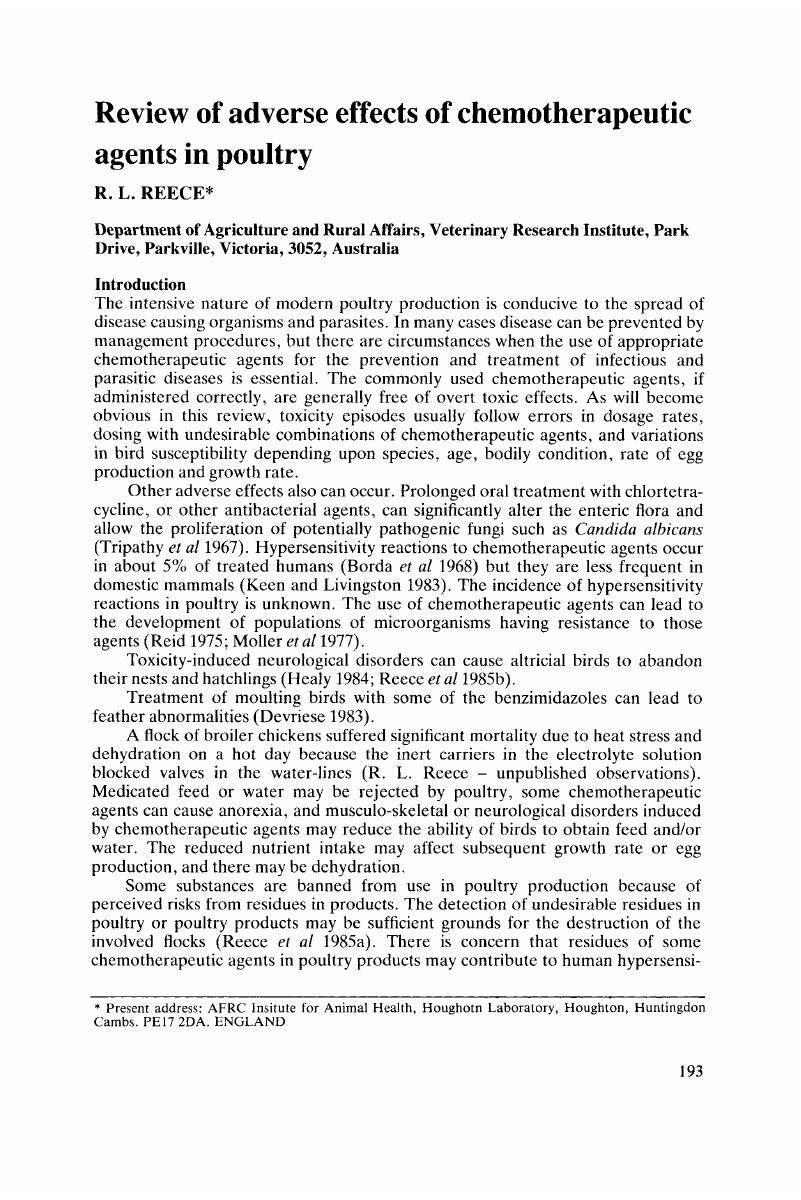Crossref Citations
This article has been cited by the following publications. This list is generated based on data provided by Crossref.
Reece, R.L.
1991.
Ascites syndrome in SPF Light Sussex chickens.
Journal of Comparative Pathology,
Vol. 105,
Issue. 4,
p.
445.
LANCASTER, MJ
and
HOOPER, LN
1991.
Neuronal necrosis in budgerigars treated with dimetridazole.
Australian Veterinary Journal,
Vol. 68,
Issue. 8,
p.
280.
Dowling, Laurie
1992.
Ionophore toxicity in chickens: A review of pathology and diagnosis.
Avian Pathology,
Vol. 21,
Issue. 3,
p.
355.
Rath, NC
Chapman, HD
Fitz-Coy, SH
Balog, JM
Huff, GR
and
Huff, WE
1998.
Effects of roxarsone and monensin on digital flexoral tendons of broiler chickens.
Poultry Science,
Vol. 77,
Issue. 4,
p.
523.
Chapman, H.D.
Jeffers, T.K.
and
Williams, R.B.
2010.
Forty years of monensin for the control of coccidiosis in poultry.
Poultry Science,
Vol. 89,
Issue. 9,
p.
1788.
Fulton, Richard M.
2013.
Diseases of Poultry.
p.
1287.
Castillo, LRI
Portillo, LJJ
León, FJ
Gutiérrez, DR
Angulo, EMA
Muy-Rangel, MD
and
Heredia, JB
2018.
Inclusion of Moringa Leaf Powder (Moringa oleifera) in Fodder for Feeding Japanese Quail (Coturnix coturnix japonica).
Revista Brasileira de Ciência Avícola,
Vol. 20,
Issue. 1,
p.
15.
Fulton, Richard M.
2020.
Diseases of Poultry.
p.
1349.
Chapman, H. David
and
Rathinam, Thilak
2022.
Focused review: The role of drug combinations for the control of coccidiosis in commercially reared chickens.
International Journal for Parasitology: Drugs and Drug Resistance,
Vol. 18,
Issue. ,
p.
32.



